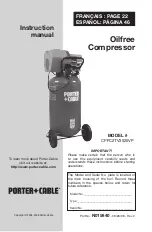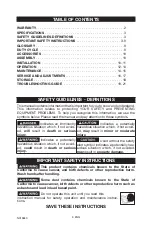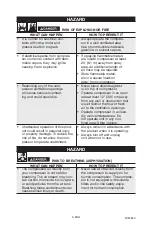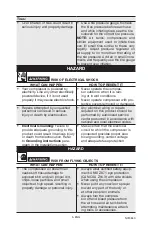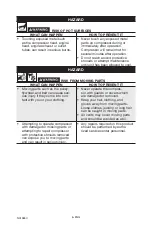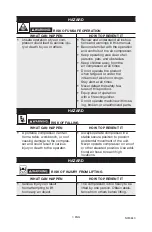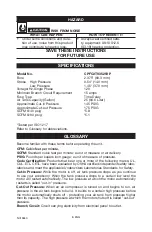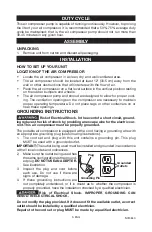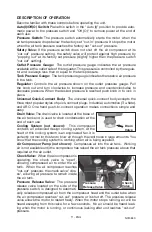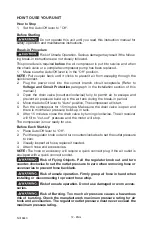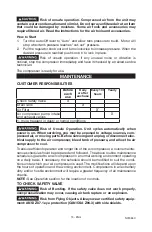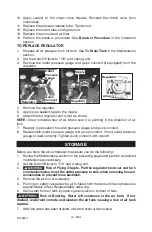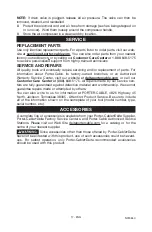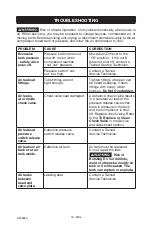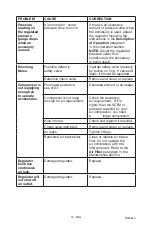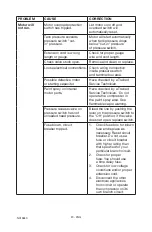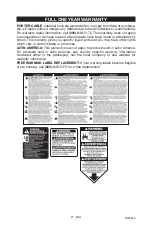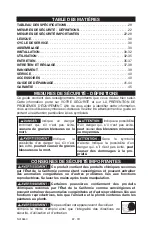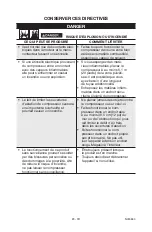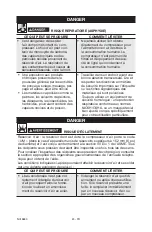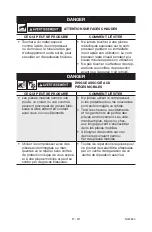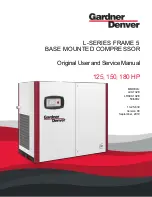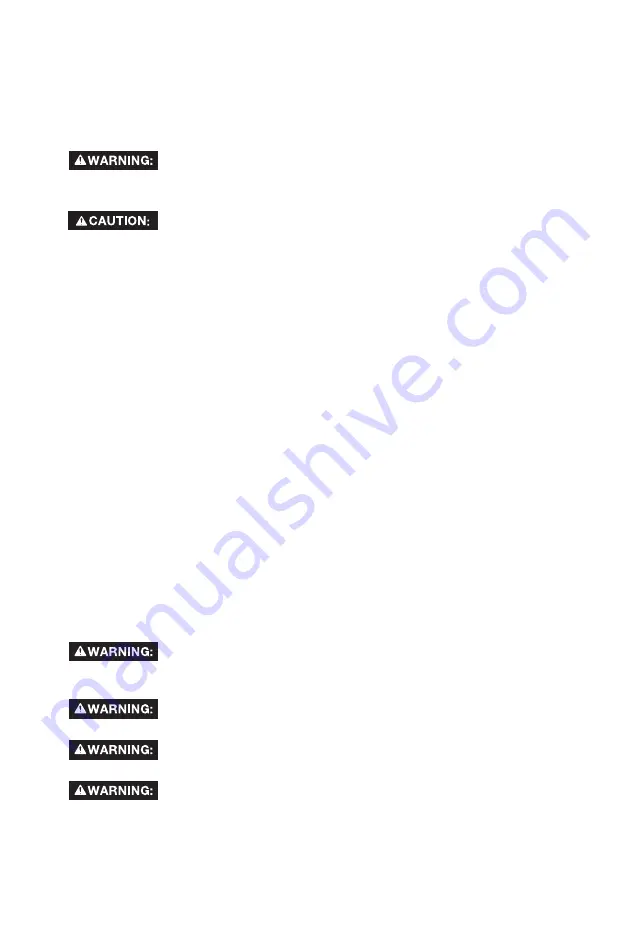
12- ENG
N015840
HOW TO USE YOUR UNIT
How to Stop
1. Set the Auto/Off lever to "Off".
Before Starting
Do not operate this unit until you read this instruction manual for
safety, operation and maintenance instructions.
Break-in Procedure
Risk of Unsafe Operation. Serious damage may result if the follow-
ing break-in instructions are not closely followed.
This procedure is required
before the air compressor is put into service and when
the check valve or a complete compressor pump has been replaced.
1. Make sure the Auto/Off lever is in the "Off" position.
NOTE: Pull coupler back until it clicks to prevent air from escaping through the
quick connect.
2. Plug the power cord into the correct branch circuit receptacle. (Refer to
Voltage and Circuit Protection paragraph in the
Installation
section of this
manual.)
3. Open the drain valve (counter-clockwise) fully to permit air to escape and
prevent air pressure build up in the air tank during the break-in period.
4. Move the Auto/Off lever to "Auto" position. The compressor will start.
5. Run the compressor for 15 minutes. Make sure the drain valve is open and
there is minimal air pressure build-up in tank.
6. After 15 minutes, close the drain valve by turning clockwise. The air receiver
will fill to "cut-out" pressure and the motor will stop.
The compressor is now ready for use.
Before Each Start-Up
1. Place Auto/Off lever to "Off".
2. Pull the regulator knob out and turn counterclockwise to set the outlet pressure
to zero.
3. Visually inspect air hose, replace if needed.
4. Attach hose and accessories.
NOTE: The hose or accessory will require a quick connect plug if the air outlet is
equipped with a quick connect socket.
Risk of Flying Objects. Pull the regulator knob out and turn
counter-clockwise to set the outlet pressure to zero when removing hose or
accessories to prevent hose backlash.
Risk of unsafe operation. Firmly grasp air hose in hand when
installing or disconnecting to prevent hose whip.
Risk of unsafe operation. Do not use damaged or worn acces-
sories.
Risk of Bursting. Too much air pressure causes a hazardous
risk of bursting. Check the manufacturer’s maximum pressure rating for air
tools and accessories. The regulator outlet pressure must never exceed the
maximum pressure rating.

